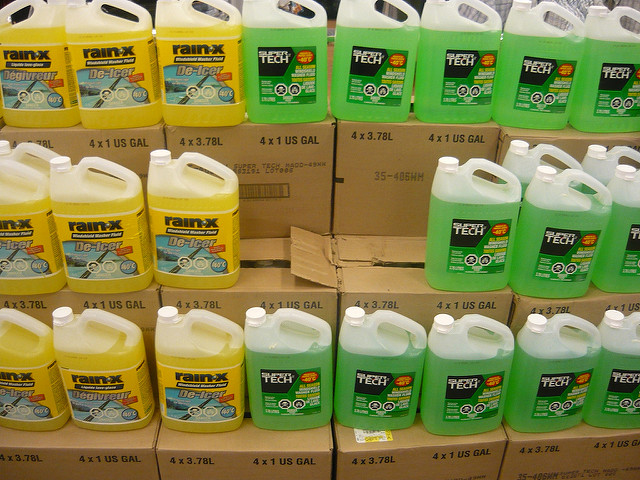
Monthly Archives: August 2017
Which Antifreeze is Right for Your Vehicle?
Vehicle antifreeze used to be simple. You went to the parts store, picked up a jug of green liquid, mixed it 50/50 with water and poured it into your radiator. But now with yellow, orange, blue, pink and red antifreezes covering the shelves, it can be hard to know what to get. This overview will help you make the right choice for your vehicle.

Types of antifreeze
For all the available colors, there are three basic types of antifreeze. Traditional green antifreeze uses Inorganic Acid Technology (IAT) and is fortified with silicates and phosphates such as ethylene glycol (EG) or propylene glycol (PG), which prevent acid buildup and prevent metal corrosion. This needs to be replaced every three years or 36,000 miles, as the additives are eventually consumed.
As for modern antifreezes, Organic Acid Technology (OAT) coolant is red or orange, is silicate- and phosphate-free, and is good for up to five years or 150,000 miles. However, it can only be used with aluminum radiators. The newest formulation is Hybrid Organic Acid Technology (HOAT), which uses nitrates to combine IAT and OAT coolant. This “universal” antifreeze is yellow or red, and can be used in most vehicles from 2002 or later. (Any antifreeze color other than the ones mentioned is the result of a company trying to make theirs look proprietary.)
Which one should I use?
When replacing antifreeze, the safest thing to do is use what came with the vehicle, which can be found by consulting your factory manual. It is sometimes possible to replace one type with another, but you’ll need to research your vehicle first – for example, using OAT antifreeze with a copper or brass radiator will cause extensive corrosion. If you are changing your antifreeze type, make sure to completely rinse out the old coolant first.
As for topping up with a different type of antifreeze, nothing disastrous will happen immediately. However, this combined antifreeze can eventually become gel-like and clog up the cooling system. It will also reduce your antifreeze’s lifespan to whatever the lower number is of the two types. If you ever find yourself in an emergency situation where you have to mix, make sure to completely change the coolant as soon as possible.

 Shop Store
Shop Store











